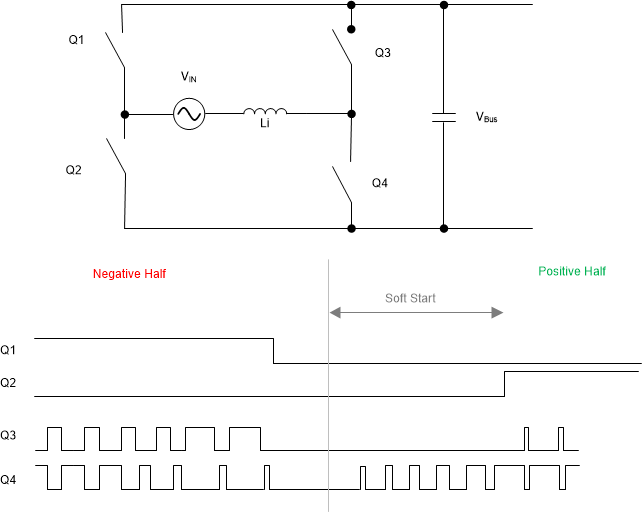TIDUD61E October 2020 – April 2021
- Description
- Resources
- Features
- Applications
- 5
- 1System Description
- 2System Overview
-
3Hardware, Software, Testing Requirements, and Test Results
- 3.1
Required Hardware and Software
- 3.1.1 Hardware
- 3.1.2
Software
- 3.1.2.1 Opening Project Inside CCS
- 3.1.2.2 Project Structure
- 3.1.2.3 Using CLA on C2000 MCU to Alleviate CPU Burden
- 3.1.2.4 CPU and CLA Utilization and Memory Allocation
- 3.1.2.5
Running the Project
- 3.1.2.5.1 Lab 1: Open Loop, DC (PFC Mode)
- 3.1.2.5.2 Lab 2: Closed Current Loop DC (PFC)
- 3.1.2.5.3 Lab 3: Closed Current Loop, AC (PFC)
- 3.1.2.5.4 Lab 4: Closed Voltage and Current Loop (PFC)
- 3.1.2.5.5 Lab 5: Open loop, DC (Inverter)
- 3.1.2.5.6 Lab 6: Open loop, AC (Inverter)
- 3.1.2.5.7 Lab 7: Closed Current Loop, DC (Inverter with resistive load)
- 3.1.2.5.8 Lab 8: Closed Current Loop, AC (Inverter with resistive load)
- 3.1.2.5.9 Lab 9: Closed Current Loop (Grid Connected Inverter)
- 3.1.2.6 Running Code on CLA
- 3.1.2.7
Advanced Options
- 3.1.2.7.1 Input Cap Compensation for PF Improvement Under Light Load
- 3.1.2.7.2 83
- 3.1.2.7.3 Adaptive Dead Time for Efficiency Improvements
- 3.1.2.7.4 Phase Shedding for Efficiency Improvements
- 3.1.2.7.5 Non-Linear Voltage Loop for Transient Reduction
- 3.1.2.7.6 Software Phase Locked Loop Methods: SOGI - FLL
- 3.2 Testing and Results
- 3.1
Required Hardware and Software
- 4Design Files
- 5Software Files
- 6Related Documentation
- 7About the Author
- 8Revision History
2.4.4 Soft Start Around Zero Crossing for Eliminate or Reduce Current Spike
Zero crossing current spikes is a challenging issue for TTPL PFC topologies. This issue is solved by implementing a soft start scheme with a state machine to turn on and off switches in a particular sequence.
 Figure 2-13 PWM Sequence With Soft Starting to Reduce Current Spike at Zero Crossing
Figure 2-13 PWM Sequence With Soft Starting to Reduce Current Spike at Zero CrossingFigure 2-13 shows the switching sequence when the AC wave goes from negative to positive. During the negative half Q1 is ON, Q3 is the active FET, and Q4 is the sync FET. During this time the voltage across Q2 is the DC bus voltage. When the AC cycle changes, Q2 must be on 100% or close to 100%. If Q2 is turned ON immediately, a huge positive spike results. Therefore, a soft-start sequence is used to turn Q4 ON as shown in Figure 2-13. The tuning of this soft start depends on the inductance value and other power stage parameters such as device Coss.
Another reason for a negative current spike around zero crossing is the relatively low AC voltage around the zero crossing. When Q3 is turned ON, though the duty cycle is low, a high-voltage difference is applied and can result in a high negative current spike. Therefore, a sufficient delay is applied before Q3 starts switching back again.
Similarly, Q2 is turned on after some delay after the soft start has started.